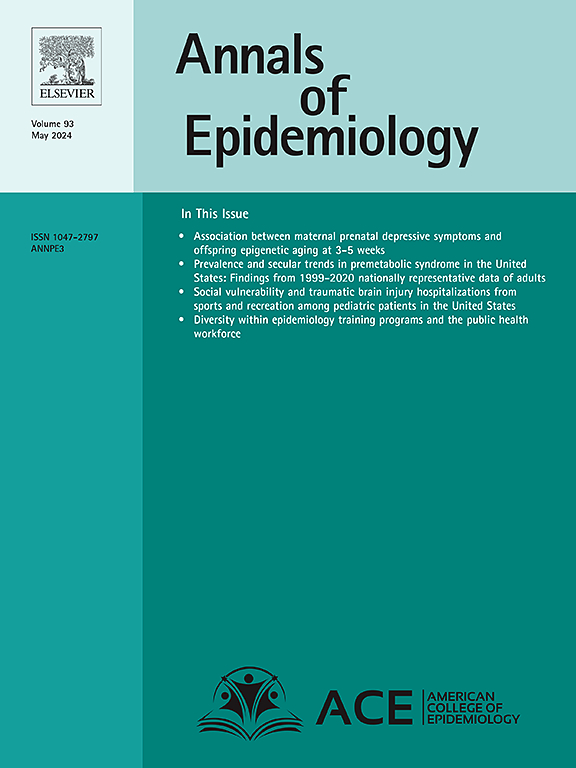在美国一个大型队列中,癌症发病率随访方法的偏倚检验:自我报告与。
IF 3
3区 医学
Q1 PUBLIC, ENVIRONMENTAL & OCCUPATIONAL HEALTH
引用次数: 0
摘要
背景:由于缺乏国家癌症登记,许多美国队列研究的癌症发病率随访依赖于自我报告。方法:在美国放射技术专家(USRT)研究中,在20世纪80年代中期至2010年代中期,通过大约每10年的自我报告以及1999年至2012年期间与州癌症登记处的联系,捕获了癌症发病率。根据癌症发病率随访方法:自我报告与基于登记的对照,我们比较了吸烟与肺癌(快速致死)、体重指数和甲状腺癌(很少致死)的关系。进行模拟研究以量化偏倚并评估癌症确定方法的相对效率。结果:在1999-2012年期间,尽管自我报告的数据产生了最广泛的置信区间(ci),但无论采用何种癌症随访方法,风险比(HR)估计都是相似的。模拟研究表明,注册表数据产生的hr偏差最小。自我报告数据的有用性主要取决于其特异性:具有完美的特异性,自我报告数据导致几乎无偏倚的推断。然而,由于不完善的特异性,自我报告的数据导致3-9%的偏倚,低于名义CI覆盖率。结论:这些发现强调了在当代美国队列研究中,与自我报告相比,基于登记的癌症发病率随访的好处,假设研究人群的登记覆盖率高。本文章由计算机程序翻译,如有差异,请以英文原文为准。
Examining bias due to method of follow-up for cancer incidence in a large U.S. cohort: Self-report versus registry linkage
Background
Cancer incidence follow-up of many U.S. cohort studies relies on self-report due to the lack of a national cancer registry.
Methods
In the U.S. Radiologic Technologists (USRT) Study, cancer incidence has been captured via self-report approximately every 10 years between the mid-1980s and mid-2010s and via linkages with state cancer registries during 1999–2012. We compared associations of smoking and lung cancer (rapidly fatal) and body mass index and thyroid cancer (rarely fatal) according to method of cancer incidence follow-up: self-report versus registry-based. Simulation studies were performed to quantify bias and assess relative efficiency of cancer ascertainment methods.
Results
During 1999–2012, hazard ratio (HR) estimates were similar regardless of cancer follow-up method, although self-reported data yielded the widest confidence intervals (CIs). Simulation studies showed that registry data yielded the least-biased HRs. The usefulness of self-reported data depends mostly on its specificity: with perfect specificity, self-reported data led to nearly unbiased inference. However, with imperfect specificity, self-reported data resulted in 3–9 % bias and lower than nominal CI coverage.
Conclusions
These findings highlight the benefits of registry-based cancer incidence follow-up compared to self-report in contemporary U.S. cohort studies assuming high coverage by registries of the study population.
求助全文
通过发布文献求助,成功后即可免费获取论文全文。
去求助
来源期刊

Annals of Epidemiology
医学-公共卫生、环境卫生与职业卫生
CiteScore
7.40
自引率
1.80%
发文量
207
审稿时长
59 days
期刊介绍:
The journal emphasizes the application of epidemiologic methods to issues that affect the distribution and determinants of human illness in diverse contexts. Its primary focus is on chronic and acute conditions of diverse etiologies and of major importance to clinical medicine, public health, and health care delivery.
 求助内容:
求助内容: 应助结果提醒方式:
应助结果提醒方式:


